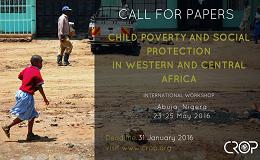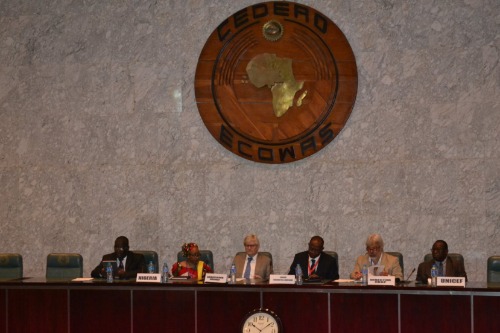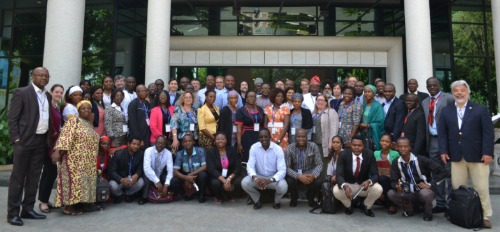Child Poverty and Social Protection in Western and Central Africa

WORKSHOP organised by UNICEF WCARO (Western and Central Africa Regional Office), CROP, the International Labour Organization (ILO), the Economic Community of West African States (ECOWAS) and Equity for Children.
According to a path-breaking study commissioned by UNICEF in 2003, child poverty in Sub-Saharan Africa (in particular in Western and Central Africa) was extremely high. Fortunately, the situation has since improved in many countries. This is in part due to the expansion of social protection.
However, given the rate of population growth, the decline is too low to make a dent in the total number of children living in poverty, contrary to the trend of adult poverty. It also seems that the reduction in child poverty has occurred in areas and among groups that are relatively close to those who are better off. Thus, inequalities, social exclusion, and the depth of poverty might have increased. Moreover, this takes place in a context where social protection is still limited and fragmented in most countries.
This workshop will seek to further understand the trends of child poverty, its distribution, and how social protection has contributed, or not, to its decline in Western and Central Africa during the last 10-15 years.
It will also explore the types and limitations of social protection in the region, as well as its accomplishments. Other policies that can help reduce child poverty, improve well-being, and address inequities will be investigated.
Papers are invited to answer the following questions for a given country or comparing across countries:
- What changes in the incidence, depth, and distribution (geographically or among socio-economic groups) of child poverty have been observed in recent years? Have inequalities and ethnic discrimination played a role in these trends? And what has been the impact of emergencies (e.g. the Ebola epidemic, floods/drought or armed conflicts) on the incidence and depth child poverty?
- Are trends similar across the different dimensions of child poverty? How sensitive are these trends to adjustments in the deprivation thresholds in these dimensions?
- Which policies have demonstrably contributed to (or hindered) these trends? What role has social protection played in reducing child poverty?
- What is the state of social protection in Western and Central African countries and how has it evolved?
- What is the political economy of social protection in Western and Central African countries?
- What lessons can be learned for successful regional integration? What should be key elements / instruments for a Regional Social Protection Policy?
Papers addressing other similar and pertinent questions about the trends, distribution, and depth of child poverty and social protection policies, including experiences from other regions, would also be welcome.


DEADLINE FOR PAPER PROPOSALS: 31 JANUARY 2016






